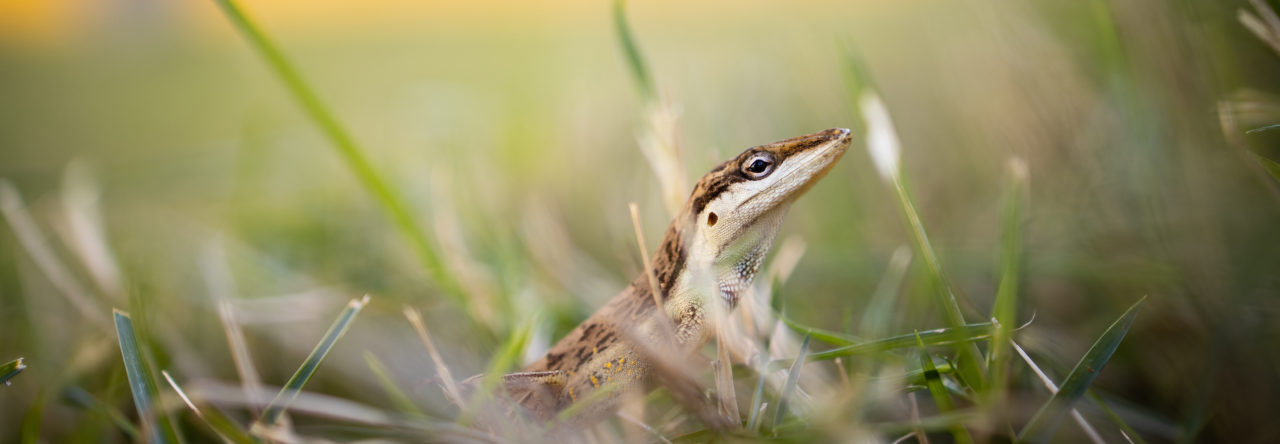Many anoles have prolonged breeding seasons spanning from the late spring until the early fall. For part of his Master’s degree Phillip Pearson, a student in the Warner lab at Auburn University, asked whether the timing of oviposition is adaptively matched to a season’s thermal environment and if there are fitness consequences of early or late developmental temperatures in Anolis sagrei. They predicted that eggs laid early in the season (April-May) and were incubated under ‘early season’ temperatures would have higher hatchling fitness than under ‘late season’ (July-August) temperatures, and that late-produced eggs would have higher fitness in ‘late season’ temperatures than ‘early season’ temperatures.
To test this hypothesis Phillip collected adult males and females from the wild and brought them back to the lab to breed. He then collected eggs from March-April as the ‘early’ cohort and from July-August as the ‘late’ cohort. Each of these cohorts was then divided into two treatments with ‘early season’ and ‘late season’ incubation temperatures, resulting in four groups. Each hatchling was weighed, measured and assessed for sprint performance.
Phillip found that both the time of oviposition and the incubation temperature significantly affected the development of the hatchlings in several ways. First, eggs in both the early and late cohorts that were incubated under early temperatures had significantly longer incubation durations. Temperature also interacted with the season cohorts, so that the ‘late season’ cohort incubated under the late season temperatures had the shortest incubation duration (Figure 1A). Second, Phillip found a significant effect of season, incubation temperature and their interaction on egg survival, where the late season cohort that was incubated under late season temperatures had the highest survival (Figure 1B). However, he did not find a significant effect of either incubation temperature or season cohort on hatchling survival. Third, eggs that were laid in the late season cohort were significantly larger in mass, snout-vent length, and tail length at hatching than early-season eggs (Figure 1C). Finally, hatchlings from the ‘late season’ cohort had marginally faster sprint speeds, with more stops (Figure 1D).

A. Incubation duration, B. egg survival, C. hatchling mass, and D. sprint speed for eggs oviposited in ‘early season’ and ‘late season’ cohorts raised under two different incubation temperatures.
Overall, Phillip’s results suggest that eggs laid later in the season and incubated under warmer late-season temperatures seem to have higher performance and fitness (in some cases). Currently, Phillip has released these hatchlings onto an island in Florida near the site of the parent population. He and the Warner lab will be going back this spring to assess survival of these hatchlings to get field-relevant data on survivorship under these two developmental treatments.

 I was watching the new Amazon Prime Show, Mad Dogs. Episode 6 is called “Leslie” named after an Anolis cuvieri, which is a central character in the episode. I grabbed a screen shot of the animal, and then another screen shot with a character holding it. The show is set in Belize ( using my Anolis Forensics Skills I deduced it was not filmed there). I did verify later it was filmed in Puerto Rico.
I was watching the new Amazon Prime Show, Mad Dogs. Episode 6 is called “Leslie” named after an Anolis cuvieri, which is a central character in the episode. I grabbed a screen shot of the animal, and then another screen shot with a character holding it. The show is set in Belize ( using my Anolis Forensics Skills I deduced it was not filmed there). I did verify later it was filmed in Puerto Rico.












